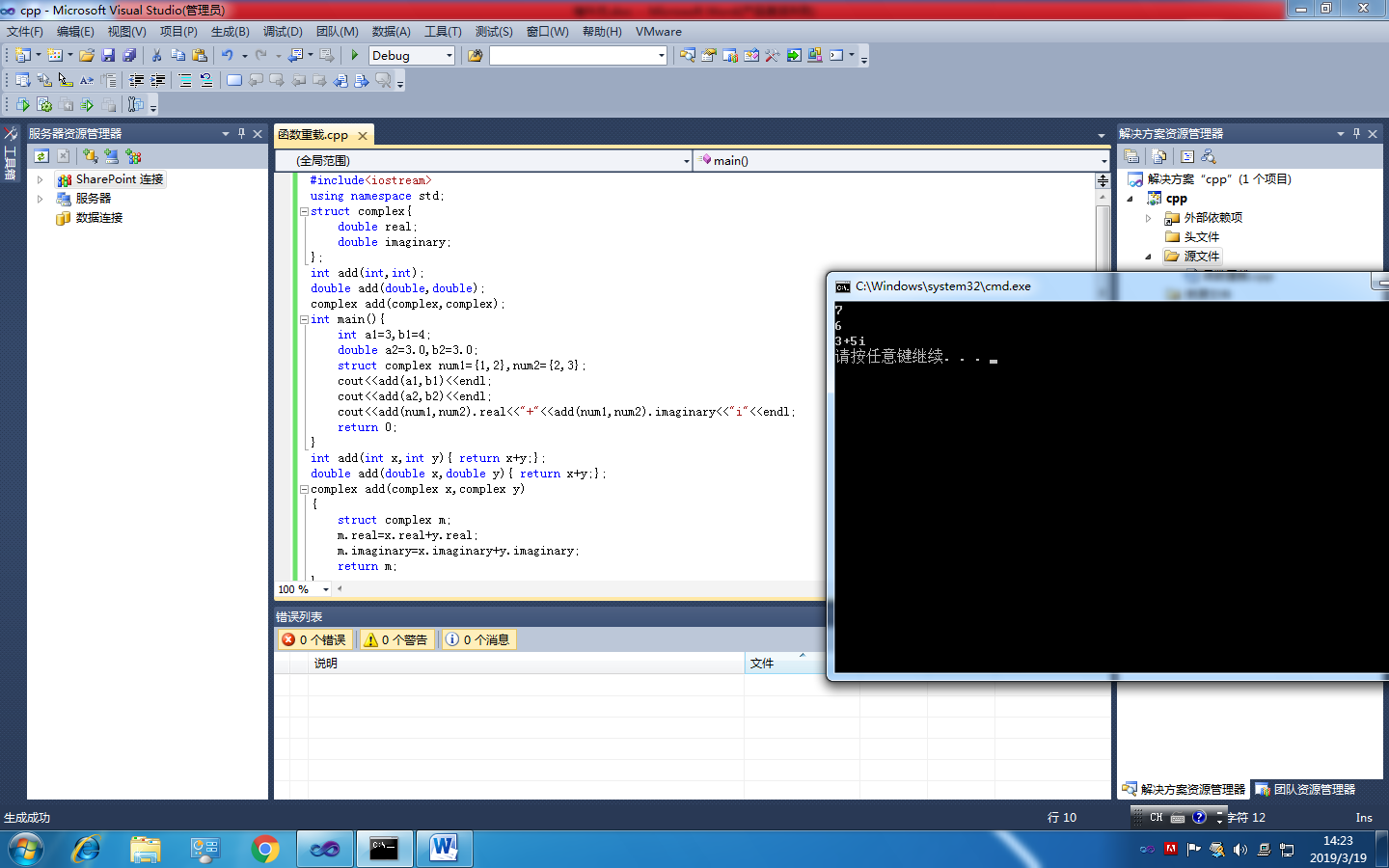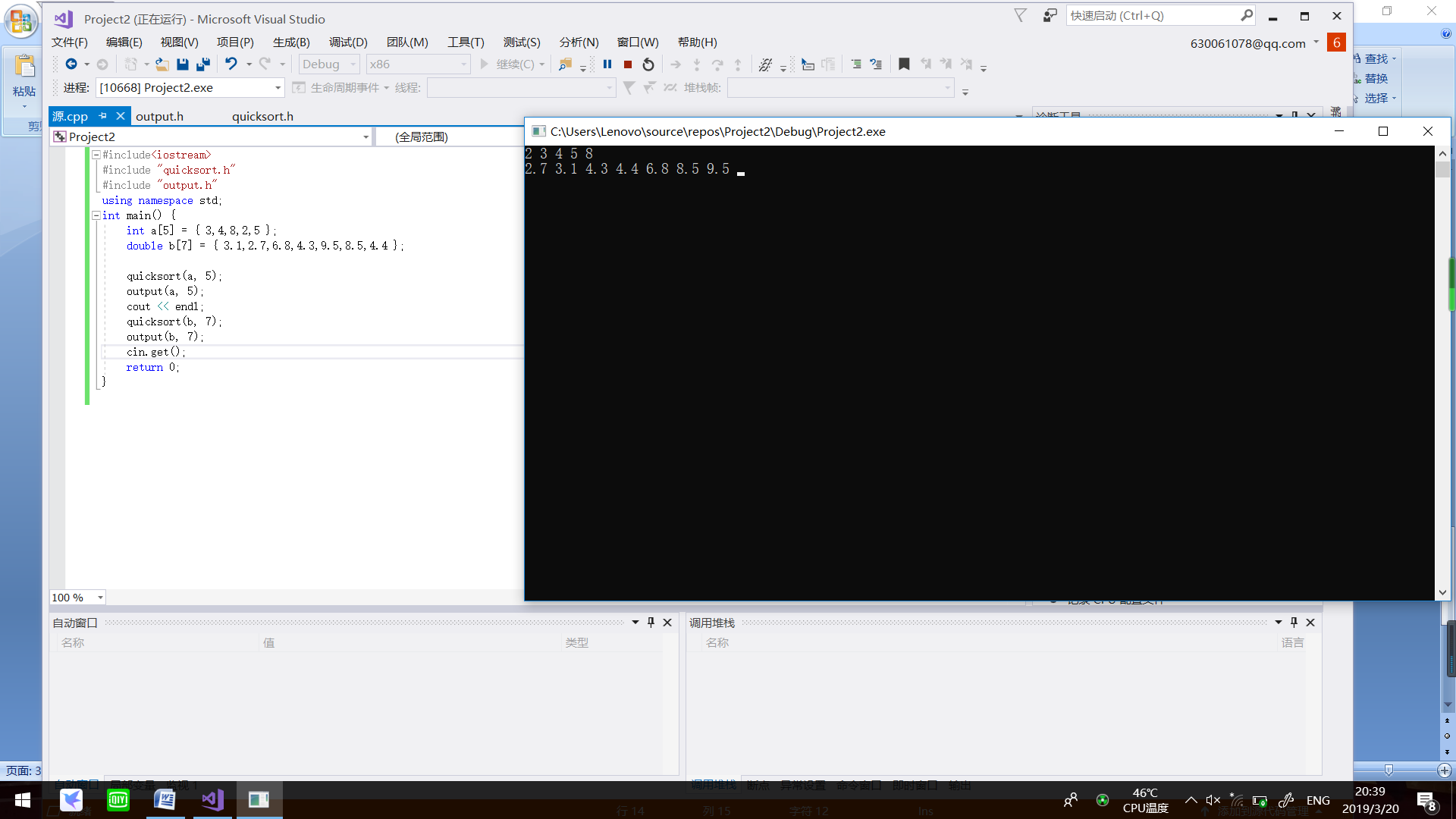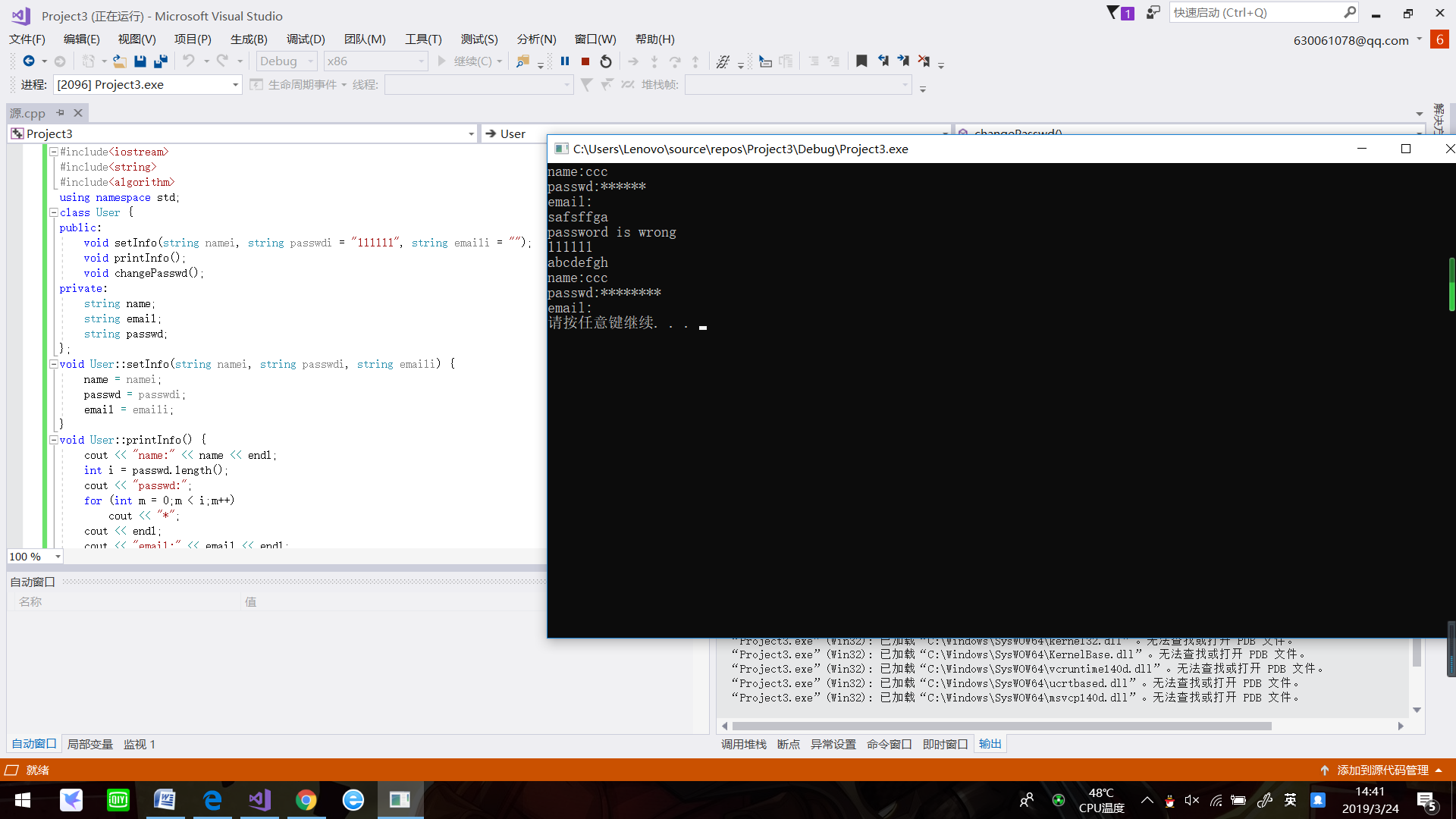实验2:函数重载、函数模板、简单类的定义和实现
1.函数重载编程练习 编写重载函数add(),实现对int型,double型,Complex型数据的加法。在main()函数中定义不同类型 数据,调用测试。
#include<iostream> using namespace std; struct complex{ double real; double imaginary; }; int add(int,int); double add(double,double); complex add(complex,complex); int main(){ int a1=3,b1=4; double a2=3.0,b2=3.0; struct complex num1={1,2},num2={2,3}; cout<<add(a1,b1)<<endl; cout<<add(a2,b2)<<endl; cout<<add(num1,num2).real<<"+"<<add(num1,num2).imaginary<<"i"<<endl; return 0; } int add(int x,int y){ return x+y;}; double add(double x,double y){ return x+y;}; complex add(complex x,complex y) { struct complex m; m.real=x.real+y.real; m.imaginary=x.imaginary+y.imaginary; return m; }

2.函数模板编程练习 编写实现快速排序函数模板,并在main()函数中,定义不同类型数据,调用测试。
头文件
quicksort.h
#ifndef QUICKSORT_H #define QUICKSORT_H template<class T> int partition(T a[], int low, int high) { T x = a[high]; int i = low; for (int j = low;j < high;j++) { if (a[j] < x) { T temp; temp = a[i]; a[i] = a[j]; a[j] = temp; i++; } } a[high] = a[i]; a[i] = x; return i; }template<class T> void qsort(T a[], int low, int high) { if (low < high) { int q = partition(a, low, high); qsort(a, low, q - 1); qsort(a, q + 1, high); } } template<class T> void quicksort(T a[], int num) { qsort(a, 0, num - 1); } #endif
output.h
#ifndef output_h #define output_h #include<iostream> using namespace std; template<class T> void output(T a[], int n) { int i; for (i = 0;i < n; i++) cout << a[i] << " "; } #endif
主函数
#include<iostream> #include "quicksort.h" #include "output.h" using namespace std; int main() { int a[5] = { 3,4,8,2,5 }; double b[7] = { 3.1,2.7,6.8,4.3,9.5,8.5,4.4 }; quicksort(a, 5); output(a, 5); cout << endl; quicksort(b, 7); output(b, 7); return 0; }

3.类的定义、实现和使用编程练习 设计并实现一个用户类User,并在主函数中使用和测试这个类。
具体要求如下: 每一个用户有用户名(name), 密码(passwd),联系邮箱(email)三个属性。 支持设置用户信息setInfo()。允许设置信息时密码默认为6个1,联系邮箱默认为空串。 支持打印用户信息printInfo()。打印用户名、密码、联系邮箱。其中,密码以6个*方式显示。 支持修改密码changePasswd(),。在修改密码前,要求先输入旧密码,验证无误后,才允许修改。 如果输入旧密码时,连续三次输入错误,则提示用户稍后再试,暂时退出修改密码程序。 在main()函数中创建User类实例,测试User类的各项操作(设置用户信息,修改密码,打印用户信息)
#include<iostream> #include<string> #include<algorithm> using namespace std; class User { public: void setInfo(string namei, string passwdi = "111111", string emaili = ""); void printInfo(); void changePasswd(); private: string name; string email; string passwd; }; void User::setInfo(string namei, string passwdi, string emaili) { name = namei; passwd = passwdi; email = emaili; } void User::printInfo() { cout << "name:" << name << endl; int i = passwd.length(); cout << "passwd:"; for (int m = 0;m < i;m++) cout << "*"; cout << endl; cout << "email:" << email << endl; } void User::changePasswd() { string rpass; cin >> rpass; while (rpass != passwd) //测试密码正确性。 { cout << "password is wrong" << endl; cin >> rpass; } if (rpass == passwd) { string newpasswd; cin >> newpasswd; passwd = newpasswd; } } int main() { User usertest; usertest.setInfo("ccc");//设置初始姓名。 usertest.printInfo(); usertest.changePasswd();//更改密码。 usertest.printInfo(); system("pause"); return 0; }





 浙公网安备 33010602011771号
浙公网安备 33010602011771号